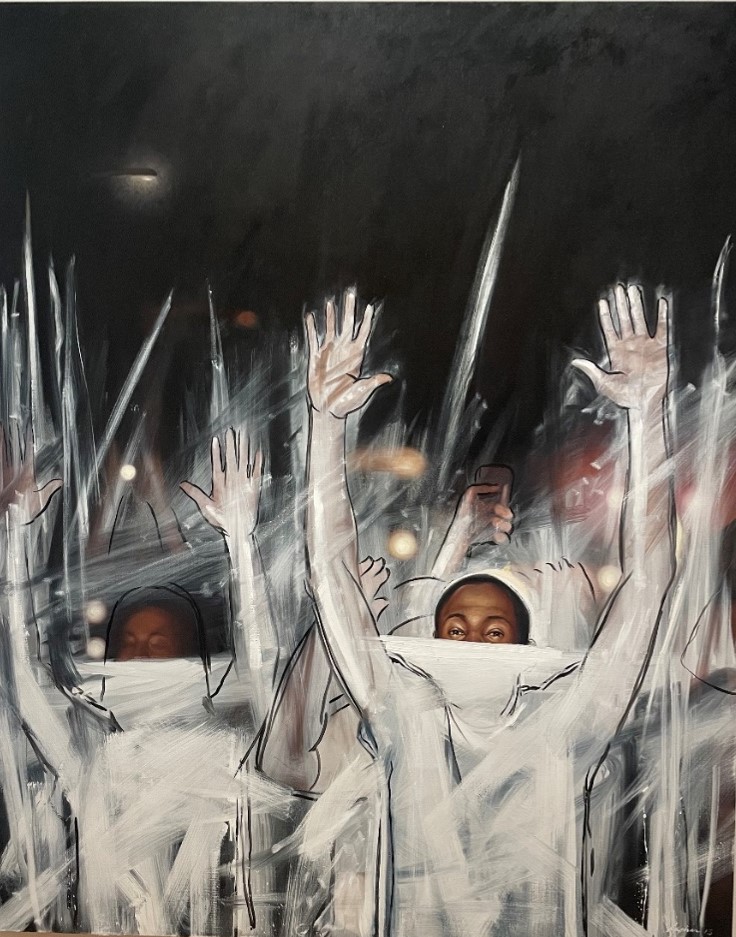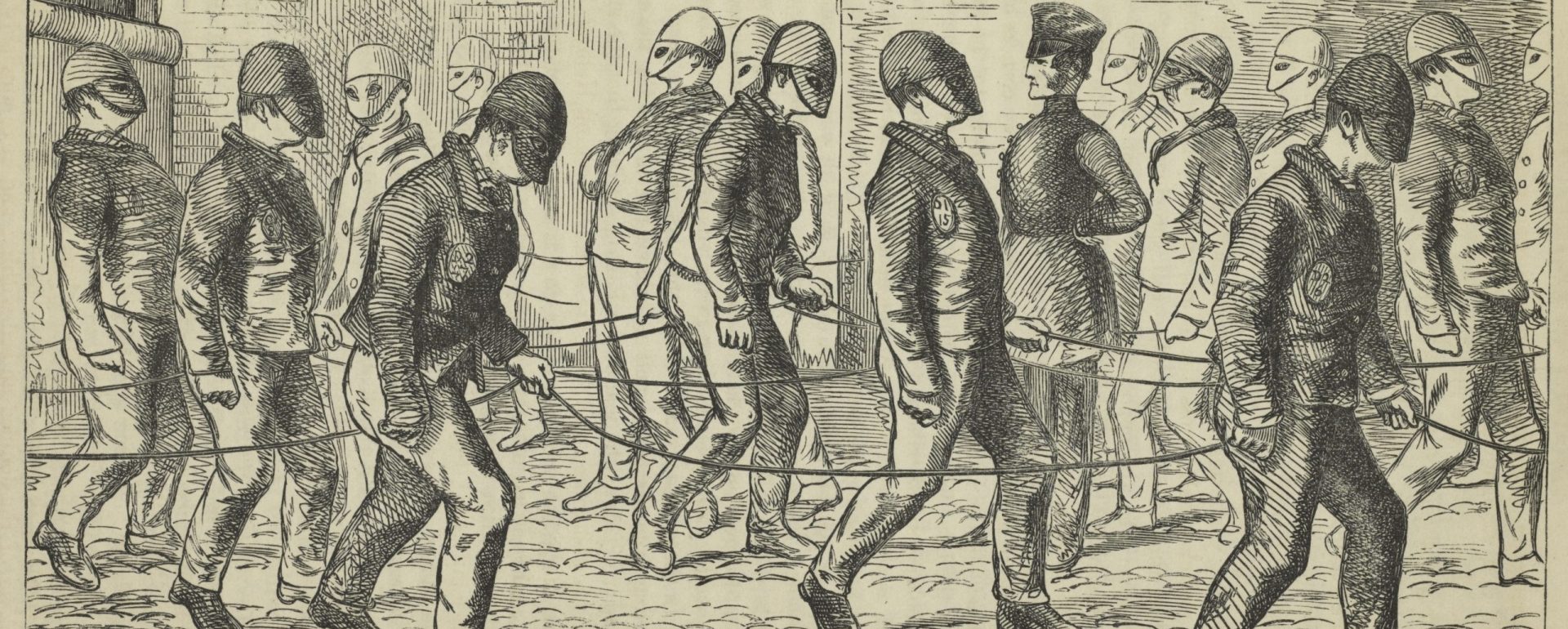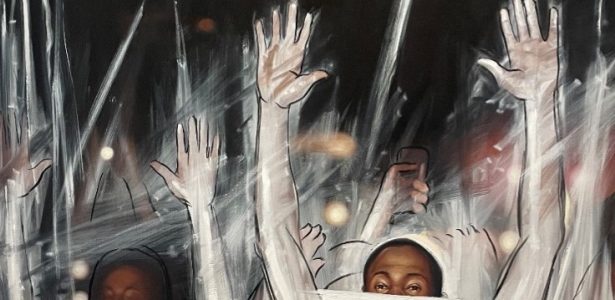
©Titus Kaphar
Introduction
The way in which people are deemed criminals in society is represented in different ways. More times than not, the person being portrayed as the culprit isn’t. In today’s society, the idea of the criminal is always skewed to favor the portrayer. In this case, the portrayer is the person who is bringing allegations against the convicted. Such misrepresentations can be reflected in the media’s representation of crime and the reflection of the portrayer’s upbringing. “Another Fight for Remembrance” by Titus Kaphar shows how the media and the mindset of the portrayer make them the criminal and not the individual being convicted.
Influences in Upbringings
Growing up we each have our own biases about any topic, race, religion, and overall way of life. Those ideas can influence how individuals investigate and prosecute crimes. These biases skew the perception of the convicted making the portrayer the criminal. Racial bias can affect how law enforcement investigates crimes and how judges, prosecutors, and juries decide to pursue charges. This makes it more difficult to solve crimes and how they are interpreted. Another Fight for Remembrance by Titus Kaphar is a painting depicting black men with their hands up and white paint smeared across them. The expressive white brush strokes are meant to show the headlight of a police vehicle. In the painting, you can see an outline of a hand holding a cell phone. While these individuals with their hands up are portrayed as criminals, they are not. While the police may have thought they were just doing their jobs by catching perpetrators, they are not. The officers are the culprits, and they will easily mistake the cell phone as a weapon because of their biases and teachings. It is easy for law enforcement to confuse an item as a weapon because of the fears that stem from the teachings in their environment. Many have heard the term, “racism/hate is taught”, yes, it is but so is growth. The environment in which we grow is the backbone of our personality. Racism is often seen as a learned behavior, passed on through generations of teachings. Children learn about race and ethnicity from their families, peers, and the media. They are exposed to stereotypes and prejudices about different racial and ethnic groups, which shape their attitudes and beliefs. We can see these biases reflected in the image above. People tend to fear what they do not understand, and this fear can lead to prejudice and discrimination. It is important to recognize that racism is a learned behavior and that it can be unlearned.
Influences in the Media
The media’s portrayal of criminals has been a topic of debate for many years. It is powerful in shaping our perceptions. Many times, innocents are depicted as violent, and these actions mislead the public and the law enforcement involved. An individual could have committed something minor, but the media can waver the public’s view to make it bigger than it is. Many would argue that the media is essential in informing the public of the dangers of criminals. They serve to highlight the severity of the crimes committed no matter how big or small. However, while that may be true, the portrayal dehumanizes the convicted to make it seem like they committed the act without any remorse. Another Fight for Remembrance by Titus Kaphar shows how these reflections can be skewed. In the image, the individuals with their hands up are depicted as the criminal. Despite the efforts to show that the men in the painting are the culprits, it fails to show how law enforcement officials play a role in wrongly convicting them.
Conclusion
In summation, the media and our upbringing play a significant role in how we view criminals. While it may sometimes be helpful, it often demonizes them and is perpetuated by biases that skew society’s perspective. The media’s responsibility is to create a balanced representation of both sides of criminal activity/behavior to reduce bias and negative perceptions as they do have substantial effects. Lastly, the biases that the portrayer has make them criminals because of their skewed morals and perception. Discrimination, racism, and hate is often used as a tool to maintain power and privilege by those in positions of authority. Criminals are often referred to as the “other” in society coming from poor or marginalized communities and are depicted as having a different race or ethnicity than the majority of the population. These misconceptions lead to false justice and contribute to stigmatization causing the portrayer to take harmful actions against the convicted.
Discussion Questions
- What responsibility does the media hold in reporting crime?
- Is the environment you grew up in “the criminal” or are you for enabling those ideals?
- What role do our morals play in determining if we are criminals?
References
Kaphar, Titus. “Search the Site.” Another Fight for Remembrance | Yale University Art Gallery, Yale University Art Gallery, 27 Oct. 2015, https://artgallery.yale.edu/collections/objects/211200.
“Deconstructing Kaphar’s ‘Another Fight for Remembrance’: A Racial Outcry: Free Essay Example.” StudyCorgi.com, 25 June 2022, https://studycorgi.com/deconstructing-kaphars-another-fight-for-remembrance-a-racial-outcry/#:~:text=Another%20Fight%20for%20Remembrance%20is%20a%20visual%20probe,of%20racial%20injustice%20meted%20on%20the%20minority%20race.

